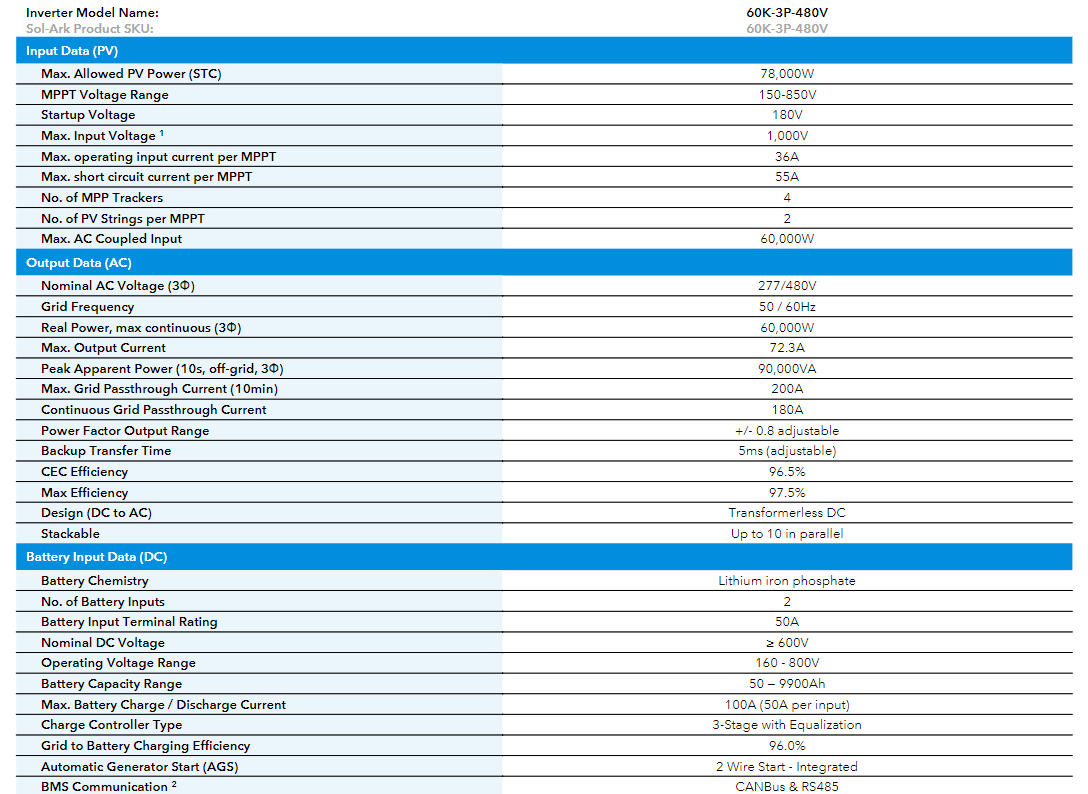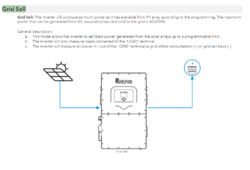Hello,
I am designing a 2MW solar array and am creating the electrical plan now. I was wondering if you could help with some advice on the inverter specs. I will include a photo of them. Since the output data is 72.3A, does this limit the input to the inverter to be less than 72.3A or is this per MPPT like the input data? I am arranging my arrays of panels and originally had 8 connected in parallel. 8 would be divided by the 4 MPPT's, which would make the total current per MPPT 27.38A which satisfies the 36A maximum per MPPT; however, since there are 4 MPPT's, then the total current going into the inverter would be 109.52A which is well above the 72.38A maximum output current. I am currently changing the design to have only 5 arrays entering the inverter (each array has a maximum current of 13.69A (short circuit) and 13.05A (maximum power current) to ensure the total current is less than 72.3A, but having less inverters would cut the cost of this drastically. Thank you for any help in advance!

I am designing a 2MW solar array and am creating the electrical plan now. I was wondering if you could help with some advice on the inverter specs. I will include a photo of them. Since the output data is 72.3A, does this limit the input to the inverter to be less than 72.3A or is this per MPPT like the input data? I am arranging my arrays of panels and originally had 8 connected in parallel. 8 would be divided by the 4 MPPT's, which would make the total current per MPPT 27.38A which satisfies the 36A maximum per MPPT; however, since there are 4 MPPT's, then the total current going into the inverter would be 109.52A which is well above the 72.38A maximum output current. I am currently changing the design to have only 5 arrays entering the inverter (each array has a maximum current of 13.69A (short circuit) and 13.05A (maximum power current) to ensure the total current is less than 72.3A, but having less inverters would cut the cost of this drastically. Thank you for any help in advance!




